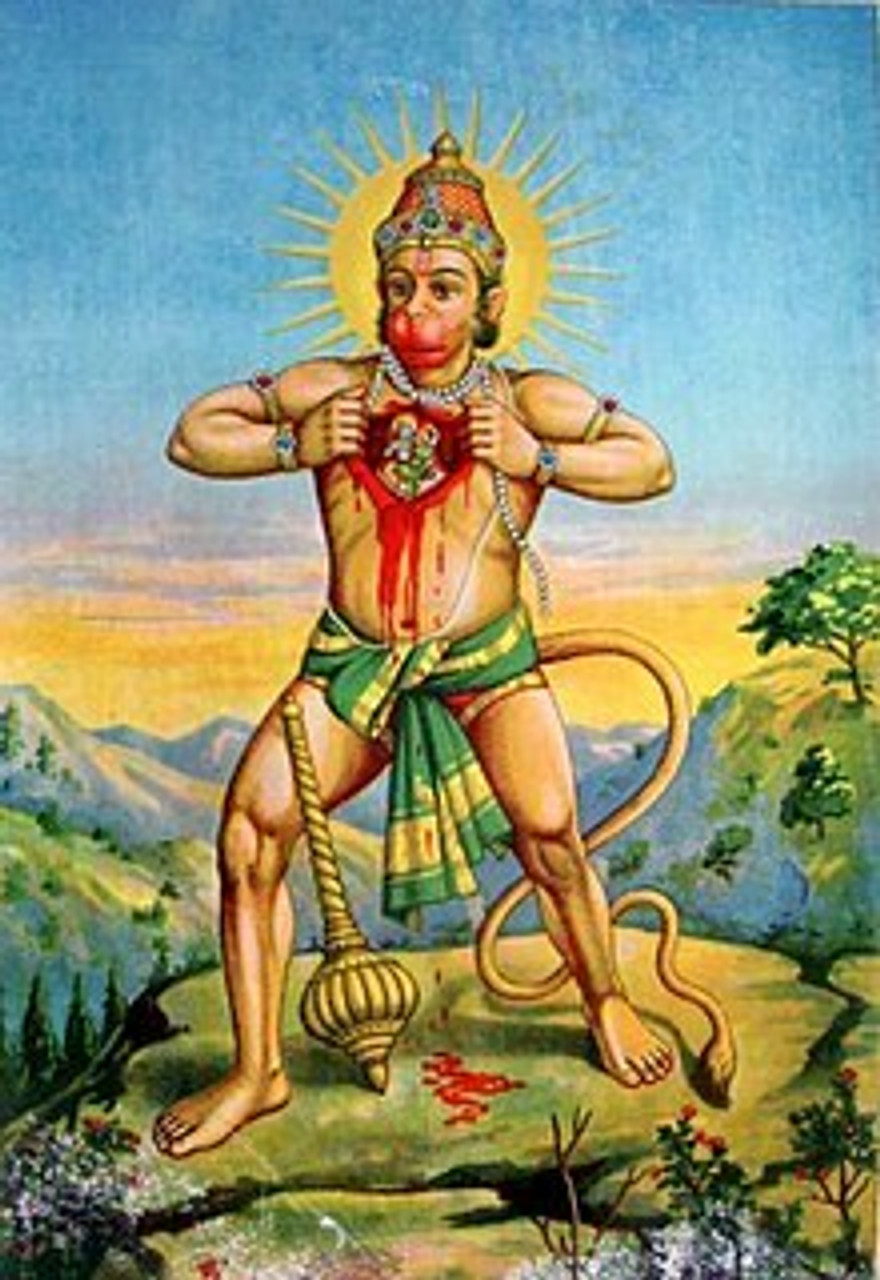
Hanumān is a Hindu god and divine vanara companion of the god Rama. Hanuman is one of the central characters of the Hindu epic Ramayana. He is an ardent devotee of Rama and one of the chiranjivis. Hanuman is also son of the wind-god Vayu, who in several stories played a direct role in Hanuman's birth.[5][7] Hanuman is mentioned in several other texts, such as the epic Mahabharata and the various Puranas.
Evidence of devotional worship to Hanuman is largely absent in these texts, as well as in most archeological sites. According to Philip Lutgendorf, an American Indologist, the theological significance of Hanuman and devotional dedication to him emerged about 1,000 years after the composition of the Ramayana, in the 2nd millennium CE, after the arrival of Islamic rule in the Indian subcontinent.[8] Lutgendorf also writes that the skills in Hanuman's resume also seem to derive in part from his windy patrimony, reflecting Vayu's role in both body and cosmos.[9] Bhakti movement saints such as Samarth Ramdas have positioned Hanuman as a symbol of nationalism and resistance to persecution.[10] The Vaishnava saint Madhva said that whenever Vishnu incarnates on earth, Vayu accompanies him and aids his work of preserving dharma.[11] In the modern era, Hanuman's iconography and temples have been increasingly common.[12] He is viewed as the ideal combination of "strength, heroic initiative and assertive excellence" and "loving, emotional devotion to his personal god Rama", as Shakti and Bhakti.[13] In later literature, he is sometimes portrayed as the patron god of martial arts such as wrestling and acrobatics, as well as activities such as meditation and diligent scholarship.[2] He symbolizes the human excellences of inner self-control, faith, and service to a cause, hidden behind the first impressions of a being who looks like an Ape-Man Vanara.[12][14][15] Hanuman is considered a bachelor and exemplary celibate.[16]
Some scholars have identified Hanuman as one potential inspiration for Sun Wukong, the Monkey King character in the Chinese epic adventure Journey to the West.[17][18]